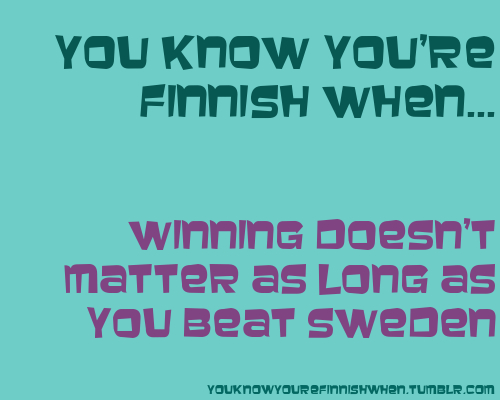Republic of Finland
Finland, officially the Republic of Finland, is a Nordic country situated in the Fennoscandian region of northern Europe. It borders Sweden on the west, Russia on the east, and Norway on the north, while Estonia lies to its south across the Gulf of Finland. The capital city is Helsinki. Finland was historically a part of Sweden and from 1809 an autonomous Grand Duchy within the Russian Empire. Finland’s declaration of independence from Russia in 1917 was followed by a civil war, wars against the Soviet Union and Nazi Germany, and a period of official neutrality during the Cold War. Finland joined the United Nations in 1955, the OECD in 1969, and the European Union in 1995 and participates in the Eurozone. Finland has been ranked the second most stable country in the world, in a survey based on social, economic, political, and military indicators.
Finnish Language
The dialects of Finnish are divided into two distinct groups, the Western dialects and the Eastern dialects. The dialects are entirely mutually intelligible and distinguished from each other by only minor changes in vowels, diphthongs and rhythm. For the most part, the dialects operate on the same phonology, grammar and vocabulary. There are only marginal examples of sounds or grammatical constructions specific to some dialect and not found in standard Finnish. Two examples are the voiced dental fricative found in Rauma dialect and the Eastern exessive case.
There are two main varieties of Finnish used throughout the country. One is the “standard language” and the other is the “spoken language” . The standard language is used in formal situations like political speeches and newscasts. Its written form, the “book language, is used in nearly all written texts, not always excluding even the dialogue of common people in popular prose. The spoken language, on the other hand, is the main variety of Finnish used in popular TV and radio shows and at workplaces, and may be preferred to a dialect in personal communication.
Spoken language
The spoken language has mostly developed naturally from earlier forms of Finnish, and spread from main cultural and political centres. The standard language, however, has always been a consciously constructed medium for literature. It preserves grammatical patterns that have mostly vanished from the colloquial varieties and, as its main application is writing, it features complex syntactic patterns that are not easy to handle when used in speech. The spoken language develops significantly faster, and the grammatical and phonological simplifications include also the most common pronouns and suffixes, which sum up to frequent but modest differences.
Nature and Parks
Much of Finland is pristine and virgin as it contains 35 national parks from the Southern shores of the Gulf of Finland to the high fells of Lapland. It is also an urbanised region with many cultural events and activities. Above the Arctic Circle, there is a polar night, a period when the sun doesn’t rise for days or weeks, or even months. Lapland, the extreme north of Finland, is so far north that the Aurora Borealis, atmospheric fluorescence, is seen regularly in winter. Outdoor activities range from Nordic skiing, golf, fishing, yachting, lake cruises, hiking, kayaking among many others. At Finland’s northernmost point, in the heart of summer, the Sun does not completely set for 73 consecutive days. Wildlife is abundant in Finland. Bird-watching is popular for those fond of flying fauna, however hunting is also popular. Elk, reindeer and hare are all common game in Finland. Olavinlinna in Savonlinna hosts the annual Savonlinna Opera Festival.

